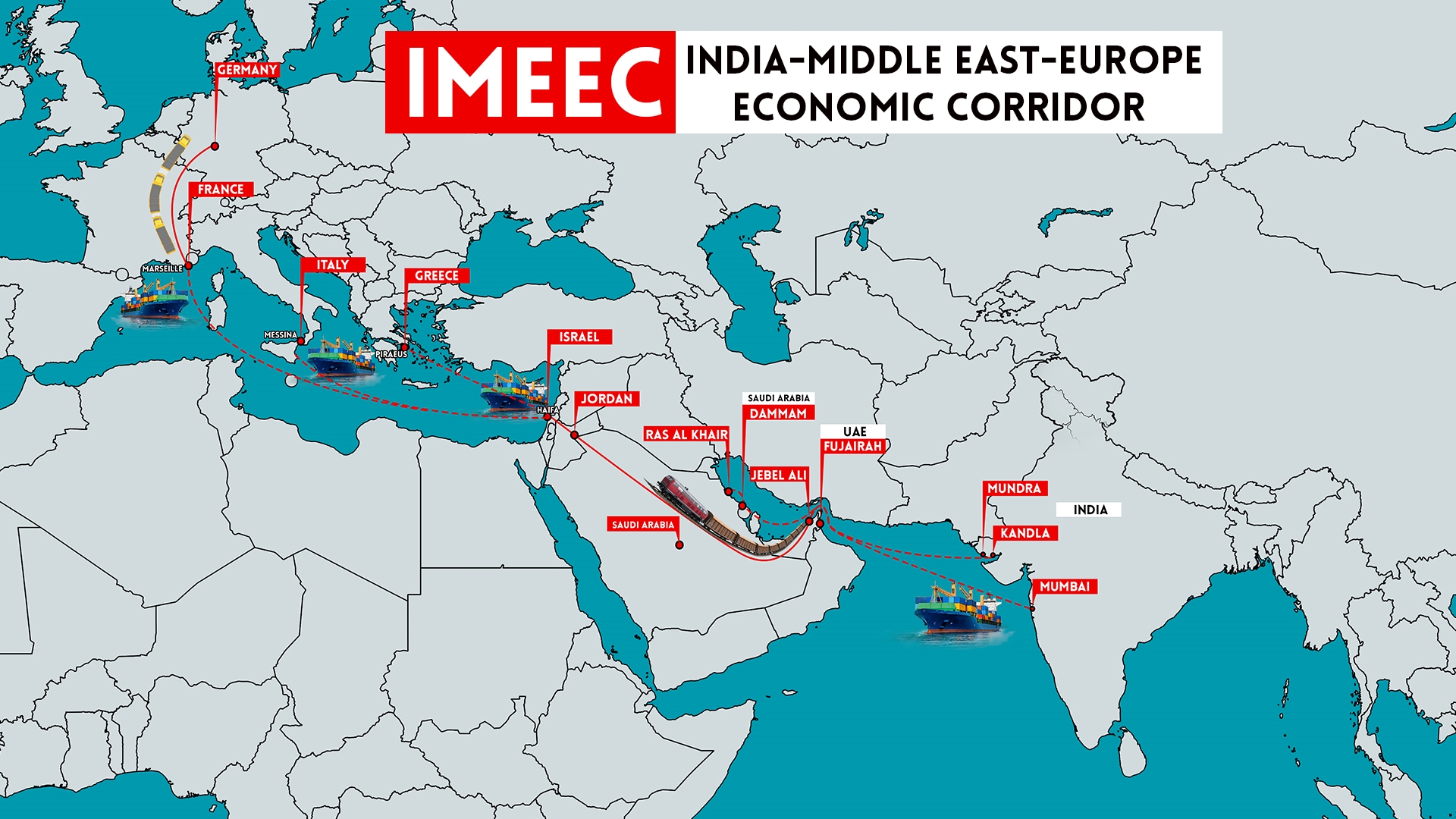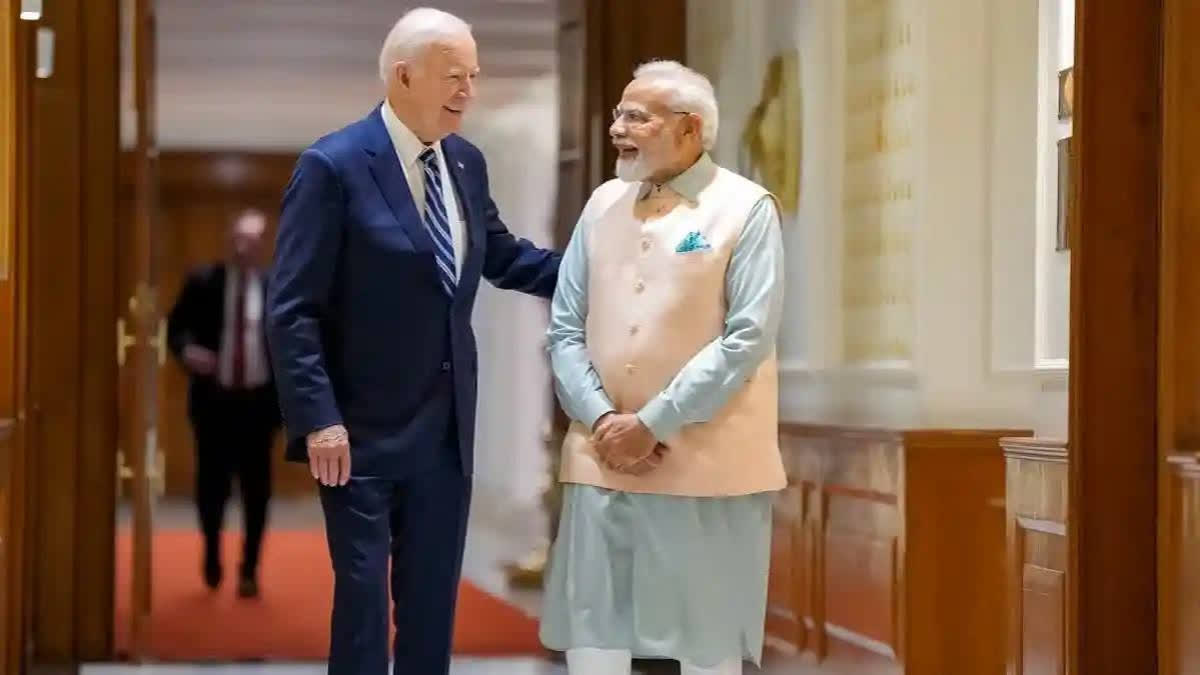India and the United Arab Emirates (UAE) on February 1, 2024 signed an agreement on the India-Middle East-Europe Economic Corridor (IMEEC), a historic trade route for hundreds of years between the Indian subcontinent, the Middle East and Europe. Although the conflict in Gaza and disturbances in the Red Sea area are a concern, Indian Prime Minister Narendra Modi and President of the United Arab Emirates, Sheikh Mohamed bin Zayed Al Nahyan decided to take this project ahead as it is an economic and strategic game changer that aims to enhance trade and accelerate the transport of goods by reducing shipping delays, prices, fuel usage, and lower greenhouse gas emissions and create employment, besides to counter China’s influence in the region.
Actually, at the G20 summit held in New Delhi in September 2023, the European Union (EU), France, Germany, India, Italy, Saudi Arabia, UAE and the United States (US) signed a memorandum of understanding (MoU) to create the IMEEC. These countries account for 40 per cent of the world's population and about 50 per cent of the global economy aims to connect India to Europe with a route that runs through the UAE, Saudi Arabia, Greece and also connect with Israel and Jordan, though these countries did not sign the IMEEC agreement.
Currently, most trade between India and Europe is by maritime routes through the Suez Canal controlled by Egypt. The IMEEC, a 4,800 km long multi-modal transport corridor, connects India's west coast with the UAE by sea, and a rail route crossing the Arabian Peninsula to the Israeli port of Haifa. From Haifa goods will be transported by sea again to Europe through the Greek port of Piraeus. Indian ports Mundra, Kandla and Mumbai will be connected to Fujairah, Jebel Ali and Abu Dhabi in UAE, Dammam and Ras Al Khair ports in Saudi Arabia, Haifa in Israel, and along with ports Marseille in France, Messina in Italy and Piraeus in Greece.
The IMEEC project will enable India to access West Asia and Europe, which was not available earlier due to a lack of overland access to Iran and the West Asia through Pakistan. It permits India to find a way around Islamabad and Tehran in its pursuit of connectivity to the Middle East and Europe.
Economically, the IMEC will facilitate India to export and import goods to the UAE, Saudi Arabia, Jordan, Israel, and Greece to reach Italy, France, Germany. The time and cost of transporting goods to Europe from India will be reduced by 40 per cent and 30 per cent, respectively. Given that most of the engineering exports are sent to Middle East and Europe, the IMEEC can increase these exports. As well, there is a great scope that IMEEC possibly will facilitate the export of India's IT resources to Middle East and Europe.

The IMEEC initiative is stumble upon economic and geopolitical obstacles. The participant countries have not made financial commitments and the scheme of accomplishing funds is not known. According to the estimation of some media reports the development of port connections and railways etc. will require $8-20 billion, but the first MoU does not specify the costs involved. Moreover, there is no information on how the financial burden will be shared between the partners. Only, the Saudi Crown Prince Muhammad Bin Salman gave assurance to invest $20 billion in the initiative.
The agreement between India and the UAE on IMEEC comes amid the volatile geopolitical scenario. The ongoing war in Gaza has disrupted US plan to integrate Israel with Arab nations. In fact, the entire project depended on the cordial relations between Saudi Arabia and Israel, an extension of the Abraham Accords, signed in August 2020, to normalise relations between Israel and some Arab states.
Connecting the rail link with Israel could be relied on relations with Saudi Arabia. Meanwhile, the two key players in IMEEC, Saudi Arabia and the UAE, have increasingly been at odds on Yemen civil war. Moreover, IMEEC will go through the Strait of Hormuz, controlled by Iran, which has been using the Strait as a pressure tool to meet its geopolitical and economic interests. Such divisions will hamper the project. Prime Minister Narendra Modi has to pursue a result oriented initiative to heal them with the backing of Saudi Arabia and US.
Even though the IMEEC may be viewed as the counter to the Chinese Belt Road Initiative (BRI), China has already gained substantial influence along the projected route of IMEEC. The UAE is an active partner of the BRI and member of the BRICS+, and participant in the Shanghai Cooperation Organization (SCO).
China is the leading UAE's global trading partner in trade other than oil in 2023, followed by India shows the deep economic ties between China and the UAE. China has already invested in the Ethiad Rail project across the country, linking major industrial bases, logistic hubs, and important ports of the UAE.
International strategists on Middle East opine that IMEEC should include Oman, Turkey and Iraq due to their geographical significance. Muscat is transit point to Saudi Arabia besides the UAE. India and Oman are part of the International North–South Transit Corridor, which will link India to Russia through Iran and the Central Asia.
Turkey has also significance because the sea lane between Haifa and Greek port Piraeus would go through contested territorial waters between Turkey and Greece. An important connectivity in IMEEC, the Greek port Piraeus is managed by the China Ocean Shipping Corporation (COSCO), which will receive cargo coming from the Haifa port in Israel. In response to its exclusion, President Erdoğan stated that "there can be no corridor without Turkey" and as an alternative offered connectivity between Turkey and the Iraqi port of Faw by road and railway.
Through IMEEC, India seeks to build linkages across the Indian Ocean into the Arabian Sea, pass through a land route in the West Asia to reach the Mediterranean Sea.
The completion of IMEEC continues to be a key priority for India, because it would mark the global shift in economic and geopolitical power, with India as a focal point of this decisive passage.
The economic success of the IMEEC would be a turning point to India becoming a major trading partner with Europe and the Middle East. Implicitly, the progress of the IMEEC can also be a strategic counter to BRI, which has increased China's influence throughout Asia, Africa, and Europe. However, IMEEC is in budding stage of development, a proper plan has to be designed on how it is going to tackle financial commitments, regulations and geopolitical hindrances.
Read More:


